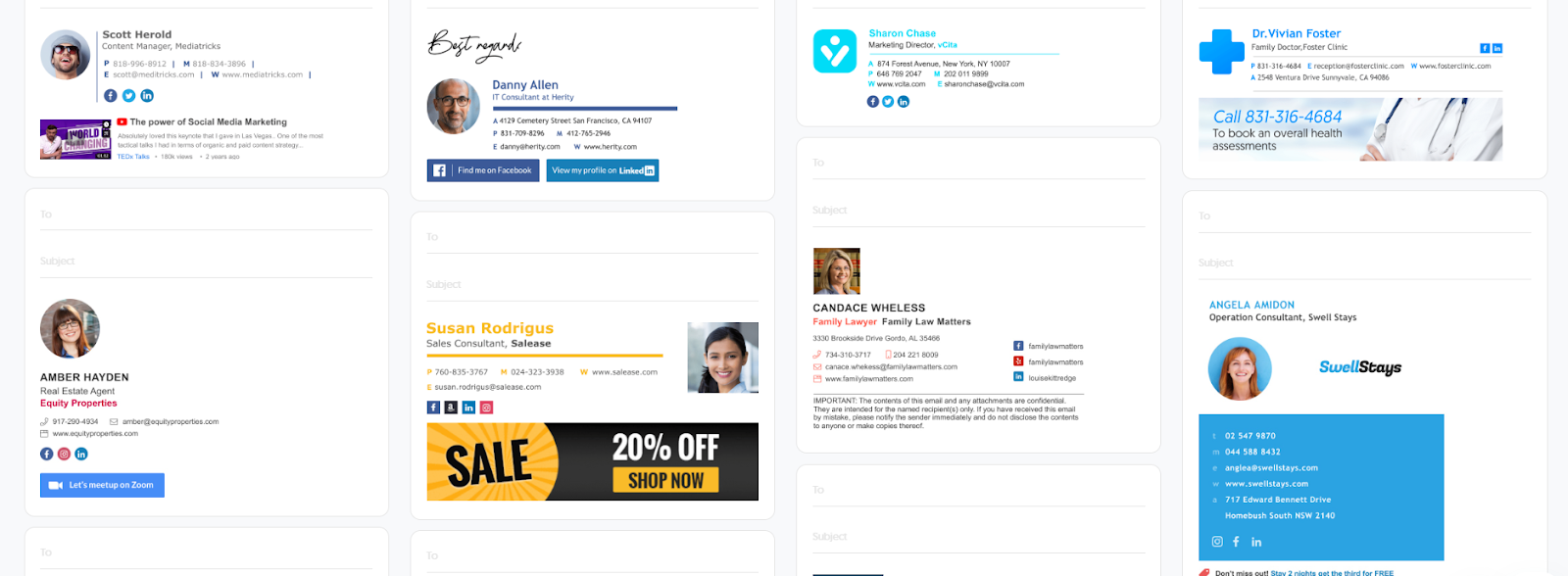Research shows that first impressions set the tone for future interactions. People base their judgments on initial experiences, even if later evidence contradicts them. This is due to the primacy effect, where we tend to remember the first piece of information we receive more than subsequent ones.
Organizations that understand the impact of well-formed electronic communication often research best practices and implement approved email signature examples containing their corporate identity. All in the pursuit of excellent professional communication.
Do Professional First Impressions Matter?
First impressions aren't just fleeting moments; they pack a punch in the business world.
They cast a long shadow, influencing choices from hiring decisions and deals to building trust and fostering successful collaborations. A positive first impression creates a fertile ground for trust and confidence, making people feel valued and more likely to engage with you.
Conversely, a negative one can be an onerous hurdle to overcome, requiring significant effort to repair. Remember, first impressions extend beyond physical encounters in today's digital landscape. Your website, social media presence, and even customer service all contribute to this crucial moment. It's not just about the handshake anymore; it's about creating a consistent and positive experience across all touchpoints to make a lasting impact truly.
Becoming a Professional Communication Samauri
Before hitting "send," ensure your email exudes professionalism with these crucial pre-launch steps:
Craft a First Impression that Counts
Don't let typos and grammatical errors undermine your credibility. Go beyond spellcheck and critically assess for clarity and conciseness. Remember, your email represents you and your company. Briefly summarize your purpose and entice the recipient to open it.
Ditch vague phrases like "Hi" and opt for informative clarity. Furthermore, show courtesy by using the recipient's preferred name and title. When unsure, err on the side of formality. Remember, respect sets the tone for the entire interaction.
Structure For Impact
Avoid sarcasm, humor, or overly casual language. Remember, professionalism and respect go together for effective communication. Always begin with a proper greeting, clearly state your purpose in the body, and conclude with a professional sign-off.
An apparent email structure ensures that your message is easily understood and acted upon.
Attachments should be limited to necessary ones and have clear, descriptive names for easy identification. The recipient should not be overwhelmed with unnecessary information.
Foster Positive Communication
Aim for a swift communication turnaround to demonstrate respect and responsiveness. If delayed, acknowledge and provide an estimated response time. Timeliness shows you value the recipient's time and builds trust.
While the urge to emphasize with exclamation points or quickly reply to a large group might be tempting, resist! Excessive punctuation screams unprofessionalism, and including unnecessary recipients in your response creates clutter and can damage your credibility.
Treat the carbon copy (CC) field respectfully, including only those directly relevant to the conversation. For sensitive information requiring discretion, use Blind-Carbon-Copy (BCC) judiciously.
Remember, sending emails in the heat of the moment can lead to regrettable messages.
The Power Of The Humble Email Signature
from: wisestamp.com
A well-designed email signature does double duty: instantly conveys professionalism and legitimacy, especially to new contacts unfamiliar with your company. Its clean, consistent branding and displayed contact information demonstrate your attention to detail and commitment to serious communication, fostering trust with every recipient.
Your email signature can be a powerful silent brand ambassador. Its subtle design, featuring your logo, colors, and fonts, reinforces brand recognition and builds positive associations over time. But it's not just about looks!
You can strategically include links to relevant social media, websites, or promotions, generating subtle interest and driving traffic without being pushy. Additionally, a well-crafted signature makes your contact information readily accessible, saving recipients time and potentially converting them into valuable leads.
To maximize its potential, consider adding specific calls to action to nudge recipients toward your desired outcomes. Remember, when designed strategically, even a tiny signature can pack a big punch.
Conclusion
Building solid relationships and trust hinges on consistent professionalism in business communication. These guidelines are your key to unlocking its power. By implementing them, you'll ensure your emails leave a lasting positive impression, fostering connections and propelling your success. So, compose confidently, knowing that every "send" is an opportunity to shine!

